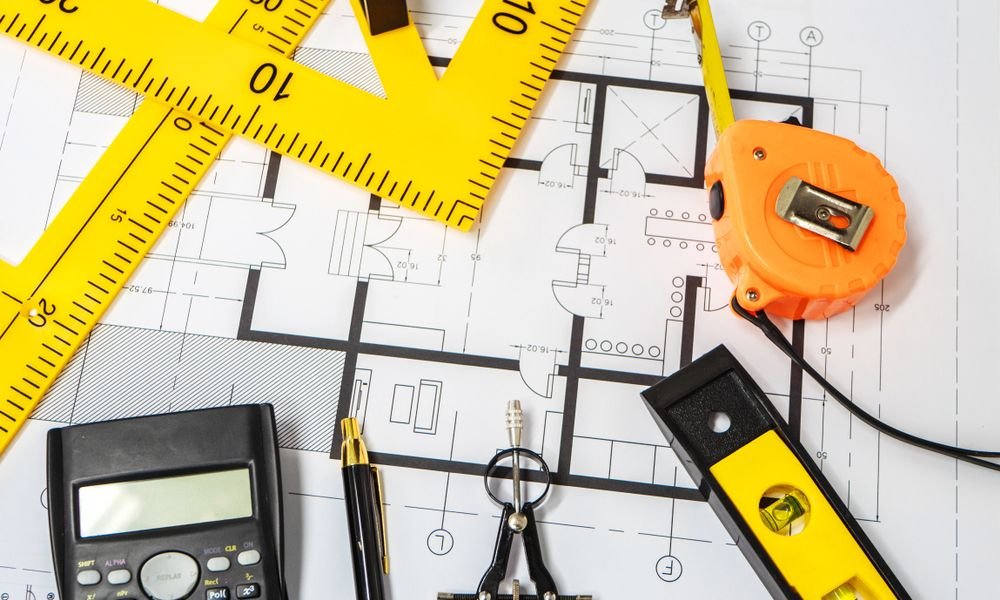Performing a Quantity Take-Off (QTO) is a critical step in estimating and planning any construction project. It involves measuring and calculating all the materials required for the build, helping ensure that projects run efficiently, stay on budget, and avoid costly delays. Whether you’re managing a small residential build or a large commercial project, mastering the QTO process will set your project up for success.
In this guide, we’ll take you through the entire QTO process, explain the key steps involved, and provide best practices to help you improve the accuracy of your estimates.
What is a Quantity Take-Off?
A Quantity Take-Off (QTO) is a detailed process used to determine the quantities of materials needed for a construction project. It involves extracting material quantities directly from the project’s architectural drawings, engineering plans, and specifications.
The goal is to create an accurate list of materials, including their sizes, types, and quantities. This list helps estimators calculate the total material cost and ensure that the right amount of materials are ordered for the project.
For example, a QTO for a residential project might include items like concrete for the foundation, timber for framing, drywall for walls, and roofing materials. Accurately calculating these quantities helps contractors avoid over-ordering or under-ordering materials, which could lead to waste or delays.

Why is Quantity Take-Off Important?
Accurate quantity take-offs are essential for several reasons:
Accurate Cost Estimation
The QTO forms the foundation for estimating the total cost of materials. Without an accurate take-off, it’s nearly impossible to develop a reliable project budget.
Efficient Procurement
An accurate QTO ensures that materials are ordered in the correct quantities, preventing delays due to material shortages or over-ordering, which can cause waste and increase project costs.
Project Planning
Knowing the exact quantities of materials needed helps project managers plan and schedule the project more effectively. It ensures that materials arrive on-site at the right time, minimizing downtime and keeping the project on schedule.
Minimized Waste
By accurately calculating material quantities, the QTO helps reduce material waste. Over-ordering can result in leftover materials, while under-ordering can cause delays due to additional orders.
The Quantity Take-Off Process: Step-by-Step
Let’s break down the steps involved in performing a successful QTO:
Step 1: Review Project Drawings and Documents
Before starting a QTO, it’s essential to thoroughly review all the construction drawings, blueprints, and documents related to the project. These include architectural plans, structural drawings, mechanical and electrical plans, and other design documents.
Make sure that you are working with the latest versions of the drawings. If there have been any revisions to the project, ensure that the QTO reflects these changes.
Step 2: Identify the Materials Required
Next, identify all the materials required for the project. Start by breaking down the project into phases or sections, such as the foundation, framing, roofing, and interior finishes. For each section, list the materials needed, such as:
- Concrete for the foundation
- Timber for framing
- Roofing materials for the roof
- Pipes for plumbing
Be specific about the type, size, and grade of materials to ensure accurate estimates.
Step 3: Measure and Calculate Quantities
Once you’ve identified the materials, the next step is to measure the quantities. Depending on the material, you’ll use different units of measurement:
- Cubic meters (m³) for materials like concrete or earthworks
- Square meters (m²) for flooring, walls, or roofing materials
- Linear meters (m) for piping, wiring, or framing materials
- Number of units for items like doors, windows, and fixtures
Accurate measurements are crucial. For example, to calculate the amount of concrete needed for the foundation, you would measure the length, width, and depth of the foundation and calculate the total volume of concrete required.
Step 4: Account for Material Waste
All construction projects experience a certain amount of material waste due to cutting, fitting, or installation errors. It’s important to account for this waste in your QTO to ensure that you have enough materials.
The waste percentage will vary depending on the material:
- Concrete: 5-10% waste allowance
- Roofing materials: 10-15% waste allowance
- Timber framing: 5-10% waste allowance
Adding a waste allowance ensures that you don’t run short of materials during the project.
Step 5: Compile the Quantities into a Take-Off Sheet
Once you’ve measured and accounted for waste, the next step is to compile all the material quantities into a Take-Off Sheet. This document should include:
- Material description (e.g., type, size, grade)
- Unit of measure (e.g., cubic meters, square meters, linear meters)
- Quantity required
- Waste allowance
- Total quantity
The take-off sheet serves as a critical reference for ordering materials, budgeting, and scheduling.
Step 6: Double-Check and Review
Before finalizing the QTO, double-check all measurements and calculations to ensure accuracy. Any errors in the take-off process can lead to incorrect estimates, which could throw the entire project off track.

Best Practices for Accurate Quantity Take-Offs
Here are some best practices to help improve the accuracy of your QTO:
Use Digital Tools
While manual take-offs are still common, using digital tools can significantly improve accuracy and efficiency. Software such as Bluebeam Revu, PlanSwift, or Cubit allows you to measure directly from digital drawings, reducing the likelihood of errors and speeding up the take-off process.
Stay Updated on Design Changes
Design changes are common during the construction process. Make sure that your QTO reflects any updates or revisions to the project’s design. If the design changes, your material quantities will likely change as well.
Involve Subcontractors
Subcontractors often have valuable insights into the materials needed for their specific tasks. Involving subcontractors in the QTO process can help ensure that all material quantities are accurate and accounted for.
Review Multiple Times
It’s always a good idea to have another estimator or project manager review the QTO for accuracy. A second set of eyes can help catch any mistakes or omissions.
Common Mistakes to Avoid in Quantity Take-Offs
Even experienced estimators can make mistakes during the QTO process. Here are a few common pitfalls to avoid:
Overlooking Small Items
It’s easy to focus on large materials like concrete or steel and forget about smaller components like screws, nails, and fasteners. Make sure all materials, no matter how small, are included in your take-off.
Incorrect Unit Conversions
Be careful when converting between different units of measure (e.g., feet to meters, square feet to square meters). Incorrect conversions can lead to inaccurate material quantities.
Ignoring Design Changes
As mentioned earlier, it’s important to update your QTO whenever there are design changes. Failing to account for these changes can result in material shortages or overages.
Mastering Quantity Take-Offs for Successful Construction Projects
A successful construction project starts with an accurate Quantity Take-Off. By following the steps outlined in this guide, you can ensure that your projects have the right materials in the right quantities, helping you stay on budget, reduce waste, and keep your project on schedule.
Whether you’re working on a small residential build or a large commercial project, mastering the QTO process is essential for ensuring that your projects run smoothly and efficiently. With accurate take-offs, you can plan, procure, and execute construction projects with confidence.
Ready to Simplify Your Quantity Take-Off Process?
Don’t let complex construction projects slow you down. With the right tools and knowledge, your quantity take-offs can be accurate and efficient, saving you both time and money. Whether you’re a contractor, estimator, or project manager, streamlining your take-off process is crucial for success.
Need help with your next project? Contact us for expert advice and resources to make your quantity take-offs easier.




